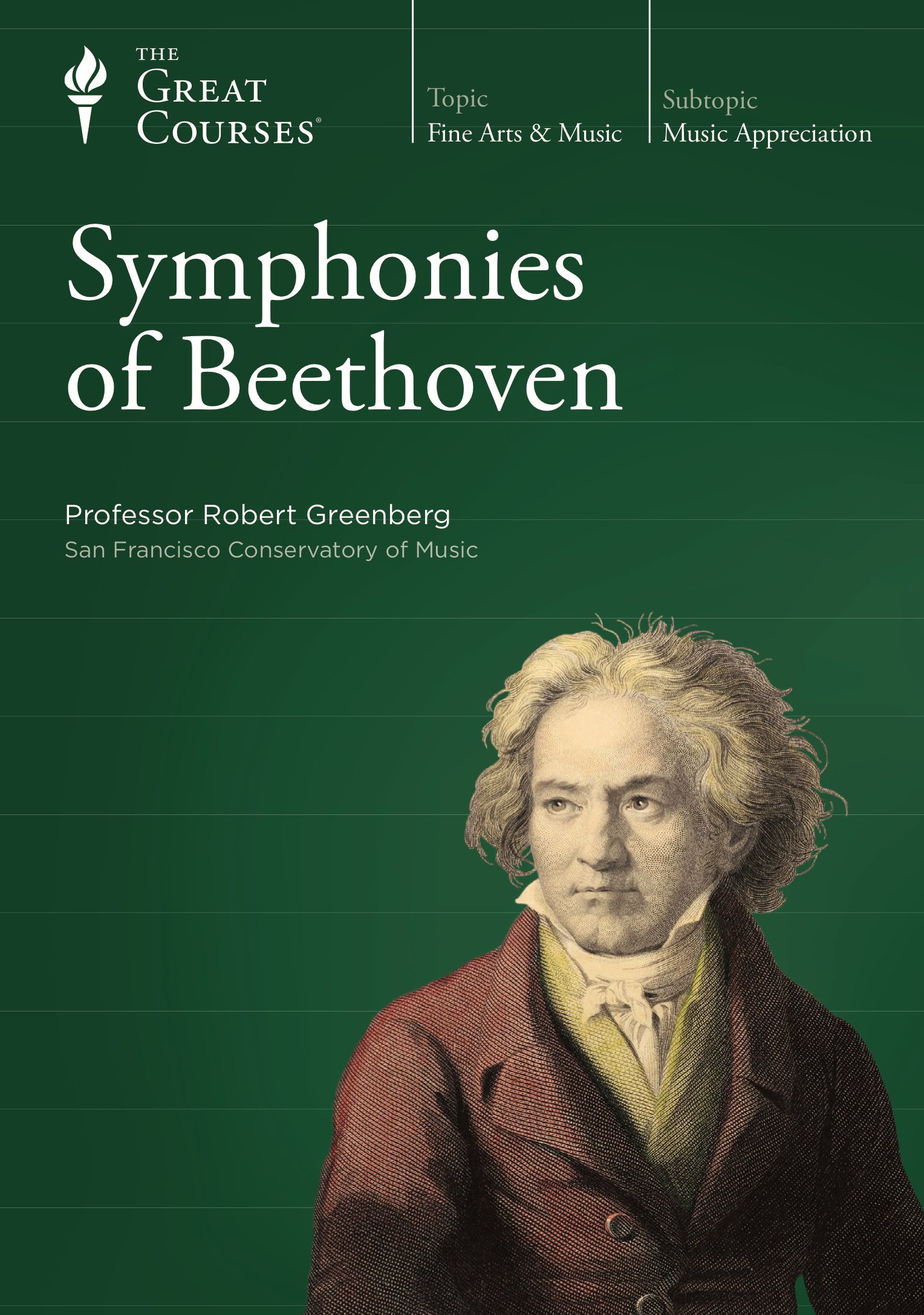Beethoven possessed a unique gift for communication. He radiated an absolute directness that makes his music totally accessible. The sheer emotional power of his music is readily understood. His revolutionary compositional ideas are easily appreciated, and make him one of the most revered composers in the history of Western music. His nine symphonies are among the greatest achievements of the human spirit.
The Details
Over the course of these 32 lectures on the history and analysis of Beethoven’s nine symphonies, we see how he revolutionized musical composition and created works of unique beauty, power, and depth.
The Symphonies of Beethoven – Course Overview
- The Viennese period, 1792–1802. Symphonies nos. 1 and 2 are composed in this decade. In them, Beethoven innovates within the Classical style.
- The Heroic period, 1803–1815. Symphonies nos. 3, 4, 5, 6, 7, and 8 are composed during this time. With these symphonies, Beethoven makes revolutionary breaks away from the Classical style.
- The Late period, 1820–1826. This period is dominated by the most revolutionary and influential composition of Beethoven’s career: Symphony no. 9. Here Beethoven fuses all art forms into one monumental work and heralds a new era of unfettered musical expression.
The Symphonies of Beethoven Lectures
- Beethoven and the Heroic Style, I
- Beethoven and the Heroic Style, II
- Beethoven and the Heroic Style, III
- Beethoven and the Heroic Style, IV
- Symphony No. 1—Beethoven as Classicist—Tradition and Innovation, I
- Symphony No. 1—Beethoven as Classicist—Tradition and Innovation, II
- Symphony No. 2—Beethoven at the Edge, I
- Symphony No. 2—Beethoven at the Edge, II
- Symphony No. 3—The “New Path”—Heroism and Self-Expression, I
- Symphony No. 3—The “New Path”—Heroism and Self-Expression, II
- Symphony No. 3—The “New Path”—Heroism and Self-Expression, III
- Symphony No. 3—The “New Path”—Heroism and Self-Expression, IV
- Symphony No. 4—Consolidation of the New Aesthetic, I
- Symphony No. 4—Consolidation of the New Aesthetic, II
- Symphony No. 4—Consolidation of the New Aesthetic, III
- Symphony No. 4—Consolidation of the New Aesthetic, IV
- Symphony No. 5—The Expressive Ideal Fully Formed, I
- Symphony No. 5—The Expressive Ideal Fully Formed, II
- Symphony No. 5—The Expressive Ideal Fully Formed, III
- Symphony No. 6—The Symphony as Program, I
- Symphony No. 6—The Symphony as Program, II
- Symphony No. 6—The Symphony as Program, III
- Symphony No. 7—The Symphony as Dance, I
- Symphony No. 7—The Symphony as Dance, II
- Symphony No. 8—Homage to Classicism, I
- Symphony No. 8—Homage to Classicism, II
- Symphony No. 8—Homage to Classicism, III
- Symphony No. 9—The Symphony as the World, I
- Symphony No. 9—The Symphony as the World, II
- Symphony No. 9—The Symphony as the World, III
- Symphony No. 9—The Symphony as the World, IV
- Symphony No. 9—The Symphony as the World, V





